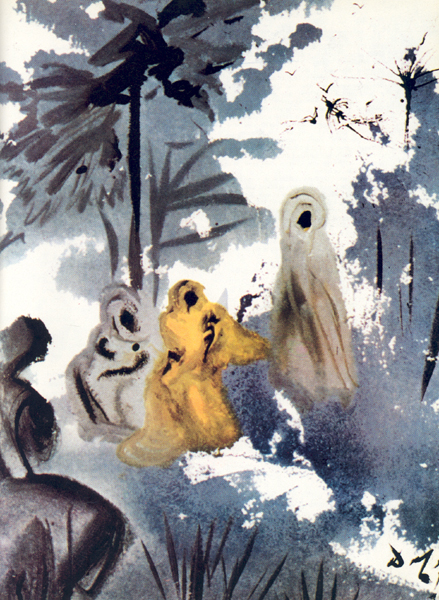Image Details

© Demart Pro Arte®/Artists Rights Society (ARS), NY
Naomi stands on the road to Judah as her two Moabite daughters-in-law, Ruth and Orpah, beg to accompany her to her native land in this watercolor by Salvador Dali. Following the death of her husband, Elimelech, and her two sons, Naomi decided to leave Moab, where her family had fled to escape famine. Unlike Orpah, who returns to her Moabite family in obedience to Naomi’s wishes, Ruth insists on traveling to Bethlehem with Naomi. Ruth vows, “Your people will be my people and your God my God,” a declaration of love and loyalty cemented when Ruth marries Elimelech’s wealthy kinsman, Boaz. Elimelech’s family recovers its land through this marriage and, when Ruth and Boaz have a son, Obed, the family also gains a future.
On the surface, the Book of Ruth depicts one family’s movement from exile, barrenness and loss to a homecoming made joyful with new unions, life and prosperity. But, according to author Adele Berlin, the Book of Ruth repeats the Bible’s central theme of the land and the people. As with Abraham and Jacob, God again fulfills his covenant to make a great nation out of Abraham’s descendants. Obed, son of Ruth and Boaz, became the grandfather of David, the greatest Israelite king and promised progenitor of the messiah who would bring an eternal kingdom.
